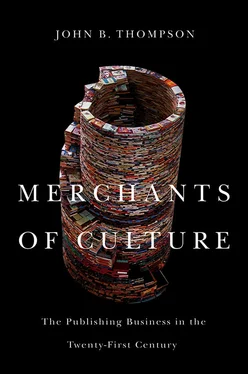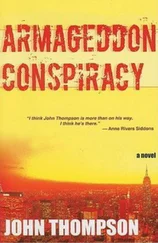The Borders Group, with total sales of around $4.1 billion in 2006, was the second largest book retail chain in the US at this time, operating around1,063 bookstores in the US, including 499 superstores under the Borders trade name and around 564 mall-based Waldenbooks stores. Borders had also expanded internationally, opening a number of Borders stores outside the US (mainly in the UK and the Pacific Rim) and acquiring Books Etc. in the UK in 1997. But in the early 2000s the Borders overseas operation began to run into difficulties. In 2007 the UK business – which by then comprised 42 superstores in the UK and Ireland and 28 branches of Books Etc. – was sold to a private equity group, Risk Capital Partners, for a modest initial sum of £10 million. It was bought out by the management in July 2009 and went into administration in November 2009. All 45 Borders stores in the UK were closed on 22 December 2009. Borders’ US business also went into decline; its last recorded profit was in 2006 and from then on its annual sales fell and its losses grew. In February 2011 Borders announced that it had filed for Chapter 11 bankruptcy protection and by September all remaining Borders stores had been closed down.
The bankruptcy of Borders marked the end of an era, in the sense that the long-running rivalry between Barnes & Noble and Borders, which saw the two book retail giants rolling out their superstores across America, was now over. But the profound changes currently taking place in the retail marketplace will pose major challenges for Barnes & Noble and the smaller retail chains that remain. Bricks-and-mortar bookstores have long faced serious competition from online retailers like Amazon and from mass merchandisers (more below); now they face the real threat that a growing proportion of book sales will be realized as ebooks that bypass the physical bookstores altogether. Total revenues from the Barnes & Noble bookstores have been declining since 2007. Barnes & Noble is a significant player in the ebook marketplace but well behind Amazon in terms of market share, and it’s not clear whether the growth of its ebook revenues will be sufficient to offset the decline of bookstore sales. While Barnes & Noble will pick up some of the sales that would previously have been credited to Borders, it is likely that the overall proportion of retail sales accounted for by the superstore and mall bookstore chains – which was probably about 45 per cent in 2006 8 – will decline significantly in the coming years.
There is no doubt that the rolling out of the nationwide book chains in the 1990s and the intense competition that developed between them greatly increased the availability of books to millions of ordinary Americans. People living in parts of the country that had, until then, been poorly served by bookstores suddenly found that there were now two or more large bookstores within driving distance, carrying a range of stock that had simply not been available before in a bricks-and-mortar store. But this dramatic transformation of the retail landscape had its costs and consequences too.
The most visible consequence – one that has been much commented upon and much lamented – was the precipitous decline of the independent booksellers. While this decline predates the rise of the superstores, it was undoubtedly hastened by it. In 1958, one-store independent booksellers were selling 72 per cent of trade books in the US; by 1980 this had fallen to less than 40 per cent of trade sales. 9 As the chains opened new superstores in the metropolitan areas across America in the 1990s, more and more independents closed down, forced out of business by the two-pronged pressure of rising overheads (and especially the rising costs of real estate) and declining revenues. The American Booksellers Association, which represents many independent booksellers, lost more than half its members in the 1990s and early 2000s: its membership fell from 5,100 in 1991 to 1,900 in 2004. Whether ABA membership figures are an accurate reflection of the actual number of independent booksellers in the US is debatable, 10 but no one disputes the fact that the number of independent booksellers has fallen significantly and that their market share has declined. In 1993, the chains accounted for around 23 per cent of retail sales in the US; by the end of the decade, this had risen to over 50 per cent. During the same period, the market share of independent booksellers fell from 24 per cent to around 16 per cent. This decline continued into the 2000s, so that by 2006 independent bookstores probably accounted for only about 13 per cent of retail sales in the US. 11
There can be no doubt that the decline of the independents was partly the outcome of predatory expansionist activity by the chains – this was not the only factor, to be sure, but it would be ingenuous to suppose that it played no role. The chains explicitly targeted those metropolitan districts or zip codes where the demographics were favourable to the sale of books, and these tended to be the same districts where independent booksellers were already located. Once the superstore opened, with its extensive stock range and aggressive discounting, it was very difficult for the small independent down the street to compete. On the other hand, many of the independents that closed down were poorly run businesses that didn’t serve their customers well. Their stores were disorganized, their stock-holding erratic, their accounts non-existent and they did little to make book-buying a pleasurable and rewarding experience for the consumer. ‘Did the independents go out of business because Barnes & Noble and Borders expanded and were predatory? Absolutely,’ said one former employee of a chain who was responsible for identifying sites for new superstores in the early 1990s. ‘The other side of the story is that they went out of business because you can’t be an amateur in this business anymore. Because bookselling was a noble profession, there seemed to be a fence between us and the rest of the economy; suddenly people woke up to the fact that you have to know what you’re doing.’ The independents that survived tended to be those that were well run and that built strong links with their local communities by hosting events of various kinds; it also helped if they owned their own real estate, or if they were protected by zoning regulations that restricted the activities of the chains. By 2007 there were probably only 400 independent booksellers left that were of real importance for trade publishers in the US. But by this time the decline of the independents appeared to have levelled off, as those that remained had succeeded in finding a strategy that would enable them to survive in the face of intense competition from the chains and other outlets. And for certain kinds of books, their role was and remains greater than their number and size – judged purely in terms of their revenue and their share of retail sales – would suggest.
The long decade of struggle between the chains and the independents ended unquestionably in victory for the chains, but there were skirmishes along the way that resulted in important gains for independent booksellers. The most important of these was undoubtedly the series of legal challenges brought against the chains and the large publishing houses by independent booksellers associations which alleged that the publishers were giving preferential terms and discounts to the chains in contravention of federal antitrust law. In mounting their case against the publishers and the chains, the independent booksellers appealed to a piece of federal legislation called the Robinson-Patman Act, which was passed in 1936 to curb what were seen as anticompetitive practices by producers who allowed chain stores to purchase goods at lower prices than other retailers. The Act prohibits price discrimination on the sale of goods to equally situated retailers when the effect is to reduce competition. Following a legal challenge brought by the Northern California Booksellers Association against the paperback publishers Avon and Bantam in 1982 and the launch of a Federal Trade Commission investigation in 1988, the American Booksellers Association announced a lawsuit in 1994 against five publishers for discriminatory practices that favoured the chains. 12 By the autumn of 1996 all of the publishers had settled out of court, admitting no wrongdoing but agreeing to abide by rules ensuring non-discrimination in pricing, credit and returns. 13 In March 1998 the ABA filed another lawsuit, this time against the two major chains, Barnes & Noble and Borders, alleging that they had violated the Robinson-Patman Act and California unfair trade practices laws (the suit was filed in the US District Court for Northern California). Again, the case was settled out of court; neither Barnes & Noble nor Borders admitted any wrongdoing, and they agreed only to pay the ABA a sum less the cost of its legal fees. This was something of a defeat for the independents, who agreed to destroy all documents obtained during the case and to refrain from any further litigation for three years. 14 But the upshot of this prolonged legal battle was the emergence of a much clearer and more transparent system for discounting and co-op advertising, 15 as well as an acute sensitivity to the risks involved in tampering with this system. The publishing houses make their discount schedules and co-op arrangements explicit so that all retailers know what they are when they are buying books and formulating promotion plans. In principle this creates a level playing field, as the large chains should not be able to use their size to force publishers to offer higher discounts, although in practice the issues are not always so clear-cut, as we shall see.
Читать дальше












